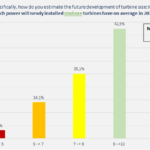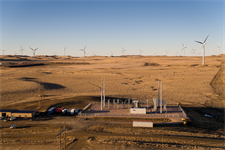Study: ‘silent sound’ from wind turbines does not impact health
Energy Disrupter

The study, by the non-profit Woolcock Institute of Medical Research, was prompted by the concerns of people living near Australia’s largest wind farms, including Cooper’s Gap in Queensland, and the Macarther project in Victoria.
Some reported experiencing headaches, dizziness and sleep disturbances, with symptoms including, nausea, tinnitus and irritability, which they attributed to the turbines.
These symptoms are sometimes referred to collectively as ‘wind turbine syndrome’, “a medical state that many, including some scholars, believe exists”, the study said.
‘Nocebo effect’
But the study found no evidence of a link. Instead, the results support the theory that wind turbine syndrome “is caused by nocebo effects…a person’s belief that the exposure will do them harm,” the institute said.
The researchers enlisted 37 healthy ‘noise sensitive’ adults to carry out three three-night stays in a sound-proof sleep lab.
Participants were exposed to either wind-turbine-simulated infrasound, no sound, or traffic noise.
As infrasound is inaudible, participants did not know whether they were being exposed to it, the researchers said.
“The infrasound generated by the audio system matches the audio pattern recorded from working wind turbines, and [was] replayed at a conservatively high level corresponding to a wind turbine being only 390m away,” acoustic engineer Dr Renzo Tonin said.
The volunteers were monitored for sleep quality and duration, brain activity, symptoms, cardiovascular changes and neurobehavioral performance.
‘No impact on health’
“None of the people exposed to infrasound developed what could be described as wind turbine syndrome,” said professor Nathaniel Marshall, lead study investigator.
He added: “There was no impact on sleep, brain functioning or cardiovascular or psychological health, so we think it’s really improbable that wind turbine infrasound causes ill-health or sleep disruption.”
The study authors said it was “critical” the results of the study were shared “far and wide” to reassure the public.
The Woolcock Institute specialises in breathing and sleep research. The five-year study was funded by Australia’s National Health and Medical Research Council (NHMRC), the main statutory authority of the Australian Government responsible for medical research.
















